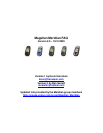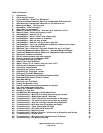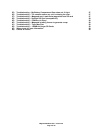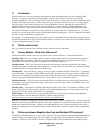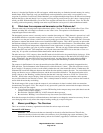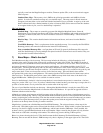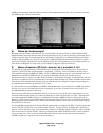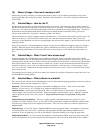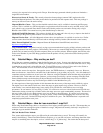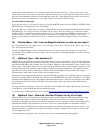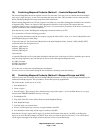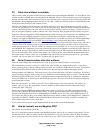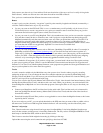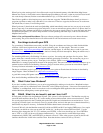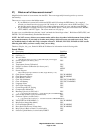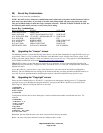
Magellan Meridian FAQ – Version 2.0
Page 9 of 30
version is also reported to be coming out for Europe. Note that maps generated with this product are limited to a
single GPS serial number.
DiscoverAus Streets & Tracks –This recently released software package (summer 2003) replaces the older
Australian Mapsend products. The older product had to be purchased for the separate states. This new package is
more up to date and covers the entire country.
Mapsend BlueNav Charts – This provides detailed nautical charts, and is available in American and European
versions. This is available as a CD which requires a registration and will be usable on only one GPS, and as a SD
card, which is copy-protected. Note that SD cards used with this product are restricted to having only a single
BlueNav chart loaded. You cannot have any other detailed maps on the card.
MapSend WorldWide Basemap – This replaces the built-in base map, and is the only way to improve the detail of
the base map in the green & yellow models. It is also locked to one GPS.
Mapsend Version Note – All of the Mapsend software above (except Streets) is available in version 4.xx. Earlier
versions cannot download directly to SD cards and are missing some key features (like the track control center).
Other Known MapSend Versions – Mapsend Streets & Destinations Suomi/Finland, more info at:
http://www.magellangps.info/
Copy Protection Note – Magellan is actively trying to prevent unauthorized copying of their software products and
the maps generated from their products. Unfortunately, this means you cannot backup the CD for the newer software
products and you must have the CD in the computer when you start the software. When installed, the GPS also asks
for the serial number of your GPS. Maps generated from the product will only load on the GPS with the specified
serial number.
14) Detailed Maps -- Why are they so bad?
One of the most common complaints is that the detailed maps are wrong. In most cases, the base maps are accurate
to within the accuracy of the GPS unit. When you compare where you are to where the GPS thinks the road is, keep
in mind that an actual road is often 100 feet wide. Typical GPS accuracy is at best 12 feet, and is often 30 feet or
more. This means that an error of 50 feet is not only common, but even to be expected.
There are few sources for map data. One popular source, the TIGER database, is completely free to use. However,
there are often errors, inaccuracies, and omissions in this database (you get what you pay for). Also, this database is
sometimes missing roads that are several years old. However, using this database means that the map can be had for
well under $100. At the other end of the spectrum, you have maps provided by a private company called NavTech.
Some claim these maps are the best that can be purchased, but software with their maps may easily cost $200 or
more. Magellan does not have any NavTech maps available for the Meridian line (yet).
It is the experience of the original author of this document that the accuracy of the maps tends to differ by region.
The author lives in the central Florida area, where the maps are quite impressively accurate. However, while in
south Florida, it was noticed that the maps were usually off by 50-100 feet, with 300-foot errors not being
uncommon. In one instance, I-95 was off by 1/2 mile. No such errors were ever noticed in the central Florida area.
Furthermore, during a recent trip to North Carolina, the maps were once again commendably accurate. The moral of
the story is that if you live in a high-accuracy area, you are likely to be quite happy. If you live in a low-accuracy
area, then you are likely to not be happy. No map is perfect. Keep in mind that mapping GPS receivers have only
been out for a few years. Perfect GPS maps may be available in ten years. The TIGER database is expected to be
completely updated within seven years.
15) Detailed Maps -- How do I use more than 1 map file?
When using downloaded maps, there is a restriction of four regions joined together in one file. This means that you
can have at most four rectangular regions of detailed coverage. Mapsend can normally load only 1 map. Here is a
technique to get around this limitation:
SD Card Reader/Writer Method:
First, create and download a map to your SD card in the card reader/writer as usual. This map will normally be
named “detail 00.img”. Then from within Windows Explorer, go to your SD card writer, and change the name of the
map file to something more descriptive, such as "californ.img" or "n_dakota.img". Be certain that the base part of



